Now You See Us
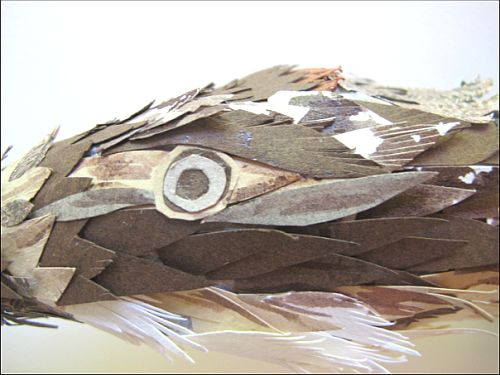
A Public Art project based on the 84 species of threatened birds in the City of Greater Geelong.
Artist
Dr Mary-Jane Walker is a scientist and practicing artist. Her work centres on our relationship with the natural world and has a particular interest in the visual communication of ideas about climate change and our response and emotional blockages to this issue.
Inspiration
Mary-Jane’s work began with her realisation of the scale of threat to local species in the City of Greater Geelong which happening before our very eyes, in every local area, and yet remains largely ignored.
Concept
This work is designed to be a public art installation based on the 84 species of threatened birds found in the City of Greater Geelong listed under the Advisory List of Threatened Vertebrate Fauna in Victoria (DSE 2013) . In 2021 the Advisory list was replaced by the Flora and Fauna Guarantee Act Threatened List 2021.
The project is intended to highlight the scale of risk happening at the local level, all over Australia, as we enter the global era of the Anthropocene, the age of man’s overwhelming influence on the planet.
Artist, Mary-Jane Walker wanted to highlight the scale of this threat by focusing on just the birds, in the first instance, creating a large murmuration of sculptural birds based on the 84 species affected. This would be made by a collective of selected local artists and would be displayed in a public place with the birds both standing and in flight depending on the species for maximum impact.
Importantly, the focus of the work is also positive and a call to action. It would highlight the sort of activities that the City of Greater Geelong is doing in conservation of habitats, for example, revegetation of the Barwon River with native species. The aim is get the attention and support of the public for this vital issue and conservation research and work.
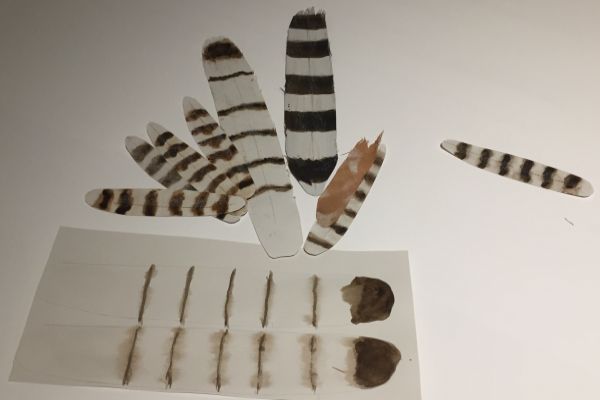
Threatened Birds in City of Greater Geelong
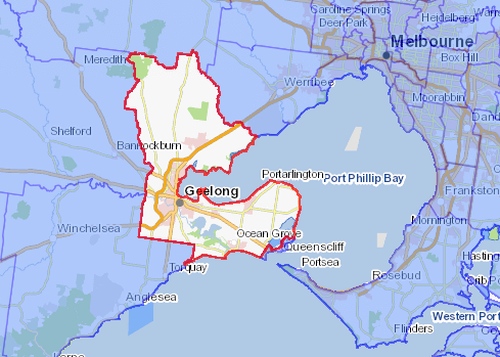
Victorian conservation status | |
| EW | Extinct in Wild |
| RX | Regionally Extinct |
| CR | Critically Endangered |
| EN | Endangered |
| VU | Vulnerable |
| NT | Near Threatened |
| DD | Data Deficient |
Common name | Scientific name | | Conservation status | ||
| Advisory list (2013) | FFG threatened list (2021) | ||||
Greater Geelong City – threatened birds | |||||
| Australasian Bittern | Botaurus poiciloptilus | EN | CR | ||
| Australian Little Bittern | Ixobrychus minutus | EN | EN | ||
| Australian Painted Snipe | Rostratula benghalensis | CR | CR | ||
| Australian Pratincole | Stiltia isabella | NT | - | ||
| Australasian Shoveler | Anas rhynchotis | VU | VU | ||
| Azure Kingfisher | Alcedo azurea | NT | - | ||
| Baillon's Crake | Porzana pusilla | VU | - | ||
| Barking Owl | Ninox connivens | EN | CR | ||
| Black Falcon | Falco subniger | VU | CR | ||
| Black-browed Albatross | Thalassarche melanophris | VU | - | ||
| Black-chinned Honeyeater | Melithreptus gularis | NT | - | ||
| Black-eared Cuckoo | Chrysococcyx osculans | NT | - | ||
| Black-faced Cormorant | Phalacrocorax fuscescens | NT | - | ||
| Black-tailed Godwit | Limosa limosa | VU | CR | ||
| Blue-billed Duck | Oxyura australis | EN | VU | ||
| Brolga | Grus rubicunda | VU | EN | ||
| Brown Treecreeper | Climacteris picumnus victoriae | NT | - | ||
| Bush Stone-curlew | Burhinus grallariu | EN | CR | ||
| Caspian Tern | Sterna caspia | NT | VU | ||
| Chestnut-rumped Heathwren | Hylacola pyrrhopygia | VU | VU | ||
| Common Diving-Petrel | Pelecanoides urinatrix | NT | - | ||
| Common Sandpiper | Actitis hypoleucos | VU | VU | ||
| Diamond Dove | Geopelia cuneata | NT | VU | ||
| Diamond Firetail | Stagonopleura guttata | NT | VU | ||
| Eastern Curlew | Numenius madagascariensis | VU | CR | ||
| Eastern Great Egret | Ardea modesta | VU | VU | ||
| Elegant Parrot | Neophema elegans | VU | VU | ||
| Fairy Prion | Pachyptila turtur | VU | - | ||
| Fairy Tern | Sterna nereis | EN | CR | ||
| Freckled Duck | Stictonetta naevosa | EN | EN | ||
| Glossy Ibis | Plegadis falcinellus | NT | - | ||
| Great Knot | Calidris tenuirostris | EN | CR | ||
| Greater Sand Plover | Charadrius leschenaultii | VU | VU | ||
| Grey Goshawk | Accipiter novaehollandiae | VU | EN | ||
| Grey Plover | Pluvialis squatarola | EN | VU | ||
| Grey-crowned Babbler | Pomatostomus temporalis | EN | VU | ||
| Grey-headed Albatross | Thalassarche chrysostoma | VU | EN | ||
| Grey-tailed Tattler | Heteroscelus brevipes | CR | CR | ||
| Gull-billed Tern | Sterna nilotica | EN | EN | ||
| Hardhead | Aythya australis | VU | VU | ||
| Hooded Plover | Thinornis rubricollis | VU | VU | ||
| Hooded Robin | Melanodryas cucullata | NT | VU | ||
| Intermediate Egret | Ardea intermedia | EN | - | ||
| Latham's Snipe | Gallinago hardwickii | NT | - | ||
| Lesser Sand Plover | Charadrius mongolus | VU | EN | ||
| Lewin's Rail | Rallus pectoralis | VU | VU | ||
| Little Eagle | Hieraaetus morphnoides | - | VU | ||
| Little Egret | Egretta garzetta nigripes | EN | EN | ||
| Little Tern | Sterna albifrons | VU | CR | ||
| Magpie Goose | Anseranas semipalmata | NT | VU | ||
| Major Mitchell's Cockatoo | Cacatua leadbeateri | VU | CR | ||
| Masked Owl | Tyto novaehollandiae | EN | CR | ||
| Musk Duck | Biziura lobata | VU | VU | ||
| Nankeen Night Heron | Nycticorax caledonicus | NT | - | ||
| Northern Giant-Petrel | Macronectes halli | NT | EN | ||
| Orange-bellied Parrot | Neophema chrysogaster | CR | CR | ||
| Pacific Golden Plover | Pluvialis fuva | VU | VU | ||
| Pacific Gull | Larus pacificus | NT | - | ||
| Painted Honeyeater | Grantiella picta | VU | VU | ||
| Pectoral Sandpiper | Calidris melanotos | NT | - | ||
| Pied Cormorant | Phalacrocorax varius | NT | - | ||
| Plains-wanderer | Pedionomus torquatus | CR | CR | ||
| Plumed Egret | Ardea intermedia plumifera | - | CR | ||
| Powerful Owl | Ninox strenua | VU | VU | ||
| Red Knot | Calidris canutus | EN | EN | ||
| Regent Honeyeater | Xanthomyza phrygia | CR | CR | ||
| Royal Spoonbill | Platalea regia | NT | - | ||
| Rufous Bristlebird (Otway) | Dasyornis broadbenti caryochrous | NT | VU | ||
| Rufous Fieldwren | Calamanthus campestris | NT | - | ||
| Sanderling | Calidris alba | NT | - | ||
| Shy Albatross | Diomedea cauta | VU | EN | ||
| Sooty Oystercatcher | Haematopus fuliginosus | NT | - | ||
| Southern Giant-Petrel | Macronectes giganteus | VU | EN | ||
| Speckled Warbler | Chthonicola sagittata | VU | EN | ||
| Spotted Harrier | Circus assimilis | NT | - | ||
| Spotted Quail-thrush | Cinclosoma punctatum | NT | - | ||
| Swift Parrot | Lathamus discolor | EN | CR | ||
| Terek Sandpiper | Xenus cinereus | EN | EN | ||
| Wandering Albatross | Diomedea exulans | EN | CR | ||
| Whimbrel | Numenius phaeopus | VU | EN | ||
| Whiskered Tern | Chlidonias hybridus | NT | - | ||
| White-bellied Sea-Eagle | Haliaeetus leucogaster | VU | EN | ||
| White-faced Storm-Petrel | Pelagodroma marina | NT | - | ||
| White-fronted Tern | Sterna striata | NT | - | ||
| White-winged Black Tern | Chlidonias leucopterus | NT | - | ||
| Wood Sandpiper | Tringa glareola | VU | EN | ||
| White-throated Needletail | Hirundapus caudacutus | - | VU | ||
| Yellow-nosed Albatross | Thalassarche chlororhynchos | VU | CR | ||
| 85 | 61 | ||||
Note: Reassessment of species conservation status for the FFG Threatened List is undertaken in a whole of Victoria context and does not necessarily reflect local status.
Art work in the images below are lead by Mary-Jane Walker with supporting artists Jen Tostevin and Rob Cuttler.
Australasian Bittern
Ixobrychus minutus - Endangered (DSE 2013) to Critically Endangered (FFG Threatened List 2021)
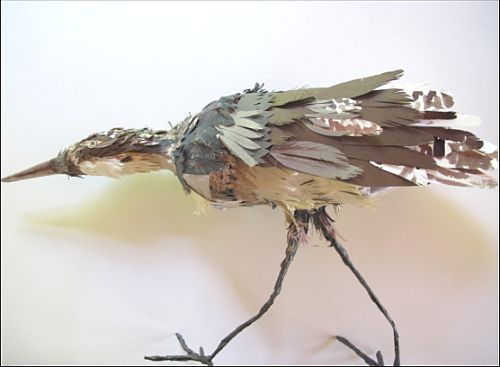
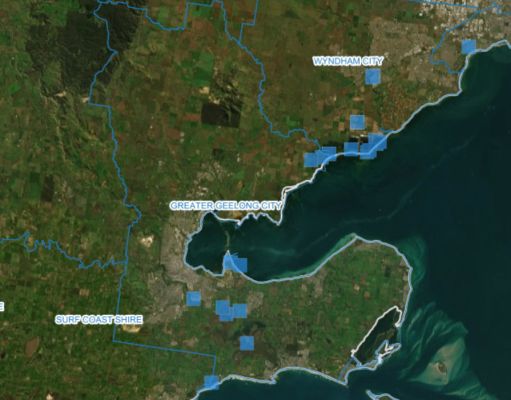
How to help: protect and restore wetland habitat, control foxes and feral cats.
Australian Little Bittern
Ixobrychus dubius - Endangered
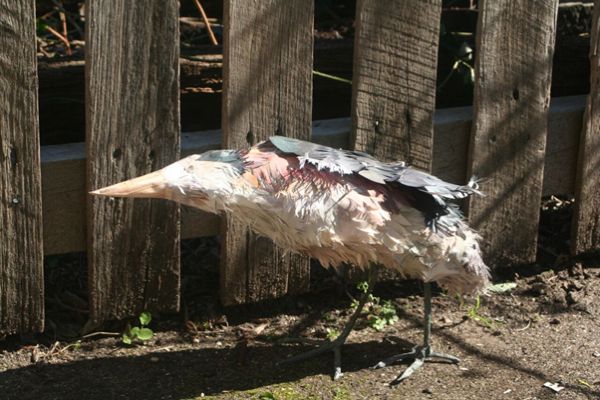
Australian Little Bittern. Artist: Mary-Jane Walker.
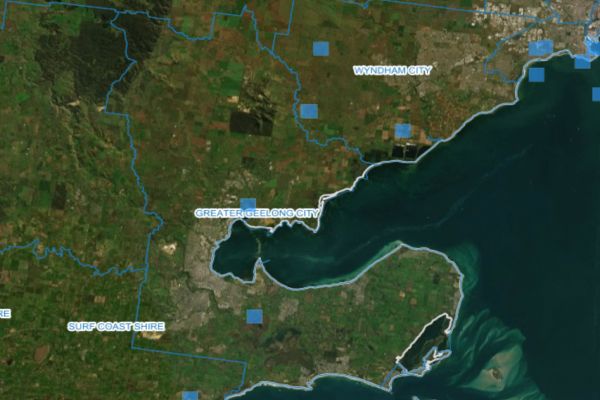
A difficult bird to locate with only 4 records in the City of Greater Geelong which date back to 1970 at Avalon, Blue Waters Lake (2013) and Reedy Lake (2001 & 2018). Source: VVB & VBA 2020.
How to help: report any sightings, advocate for wetland protection at previously known areas, fox and feral cat control.
Azure Kingfisher
Alcedo azurea - Near Threatened (DSE 2013) to not threatened on (FFG Threatened List 2021).
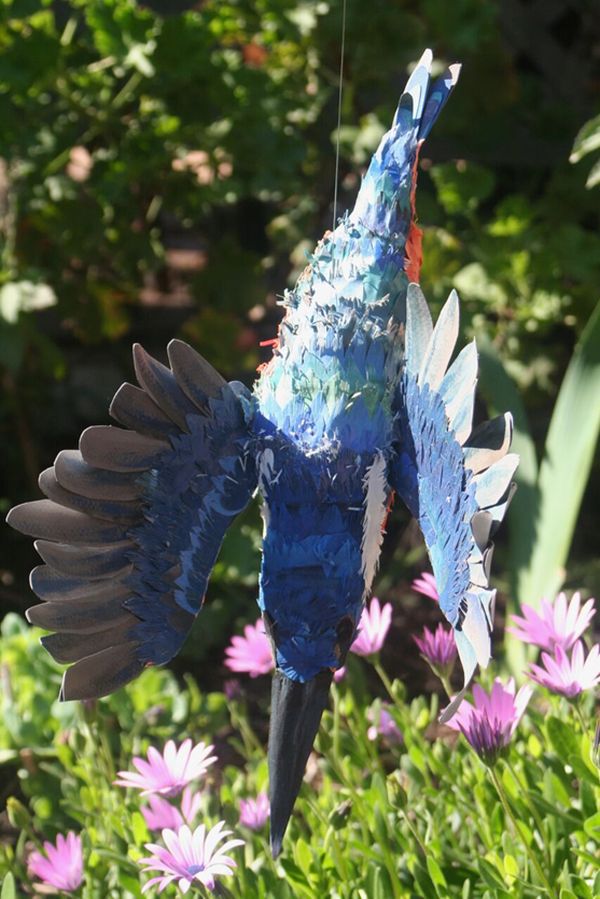
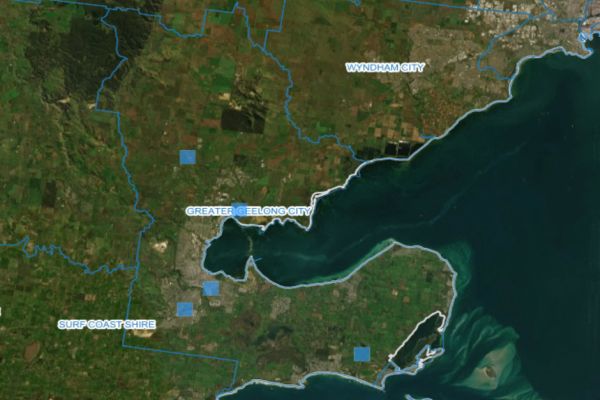
An uncommon species in the City of Greater Geelong with only a few records since 1950. It may be found near the You Yangs, Barwon River. The most recent record dates back to 1999 at Warn Ponds Valley Park. All known records between 1950 to 2020. Source: VVB & VBA 2020. More about Azure Kingfisher.
How to help: protect known Azure Kingfisher habitat, particularly water quality and riparian zones.
Barking Owl
Ninox connivens connivens - Endangered (DSE 2013) to Critically Engangered (FFG Threatened List 2021).
.jpg)
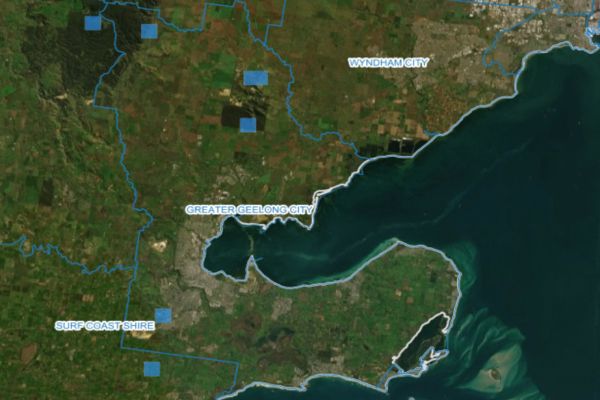
The Barking Owl inhabits open woodland forest habitats where forests adjoin farmlands, effectively creating an open farmland-woodland mosaic.
Barking Owls have not been recorded in recent years in the City of Greater Geelong. The last record was in the You Yangs in 2006, prior to that two recorders in 1989 in the norther part of the You Yangs, one record in 1990 on east side of the Brisbane Ranges and one record near Highton in 1993. All known records in City of Greater Geelong since 1989. Source: VVB & VBA 2020. More about Barking Owl.
How to help: limit wildfires and excessive burning which results in a loss of suitable hollow bearing trees, this impacts on both nesting sites and habitat for prey species. Work with Parks Victoria and private landholders on installing artificial nest boxes for prey species.
Black-chinned Honeyeater
Melithreptus gularis gularis - Near Threatened (DSE 2013) to not threatened on (FFG Threatened List 2021).
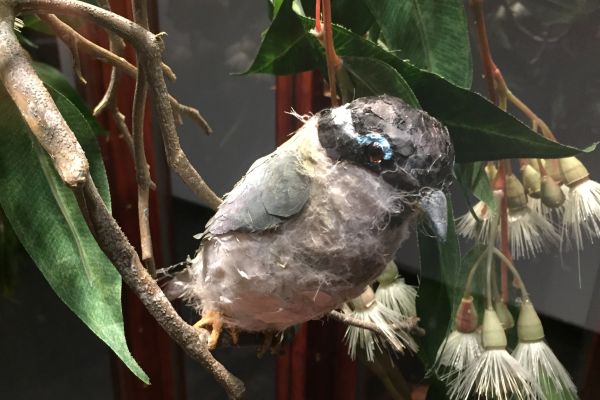
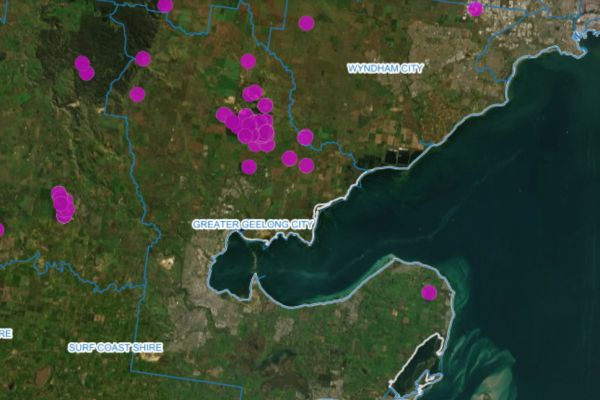
There are 257 known historic records for this species in the City of Greater Geelong. Records are mainly concentrated in the You Yangs area with records right up to 2016. It was last recorded at Portarlington 2001. All known records of Black-chinned Honeyeater in City of Greater Geelong. Source: VVB & VBA 2020. More about Black-chinned Honeyeater.
How to help: retain Eucalypt paddock trees and restoring landscape connectivity using River Red Gum, Box and Ironbark Eucalypts with a shrubby understorey including acacias.
Brolga
Grus rubicunda - Vulnerable (DSE 2013) to Endangered (FFG Threatened List 2021).
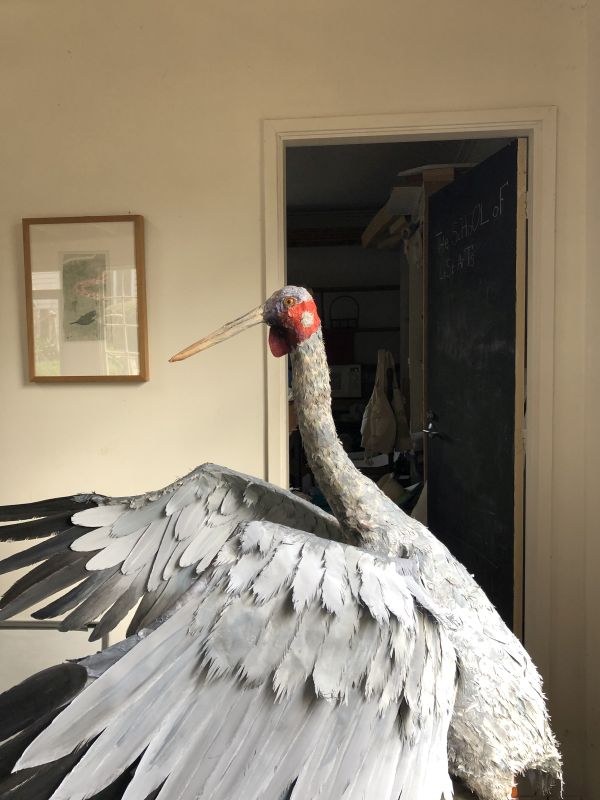
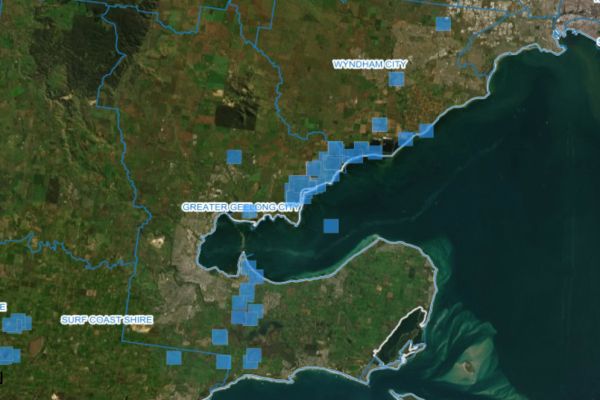
Records of Brolga between 2000 and 2020. Source: VVB & VBA 2020.
In the City of Greater Geelong, the Brolga is mainly found in wetland areas along the northern shoreline of Corio Bay north of Point Wilson towards Werribee. There are a number of records in the Reedy Lake/ Lake Connewarre area, mainly between 2000 and 2014 but nothing between 2014 – 2020, with only a sighting of a pair at Reedy Lake in June 2020. More about Brolga.
How to help: report Brolga sightings, especially pairing and nesting. Landholders can contribute to feral cat and fox control around known Brolga wetlands. Limit grazing on wetlands where Brolgas occur. Local Government needs to ensure housing and other developments do not encroach on known Brolga habitat.
Diamond Firetail
Stagonopleura guttata - Near Threatened (DSE 2013) to Vulnerable (FFG Threatened List 2021).
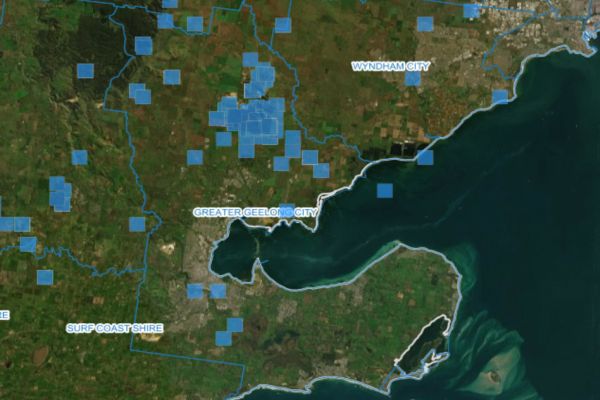
Previously recorded along the Barwon River near Belmont in 1951 and 1967 and the lower Barwon in the 1970’s this species is now mainly confined to the You Yangs. In the City of Greater Geelong, since 2000 most records are concentrated in the You Yangs area – apparently lost from its former range. All known records of Diamond Firetail since 1950. Source: VVB & VBA 2020. More about Diamond Firetail.
Eastern Curlew
Numenius madagascariensis - Vulnerable (DSE 2013) to Critically Endangered (FFG Threatened List 2021).
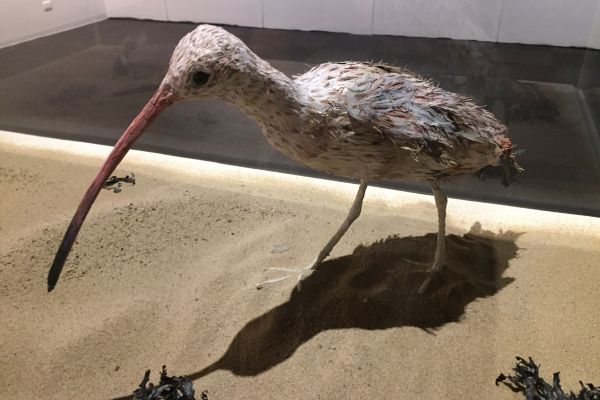
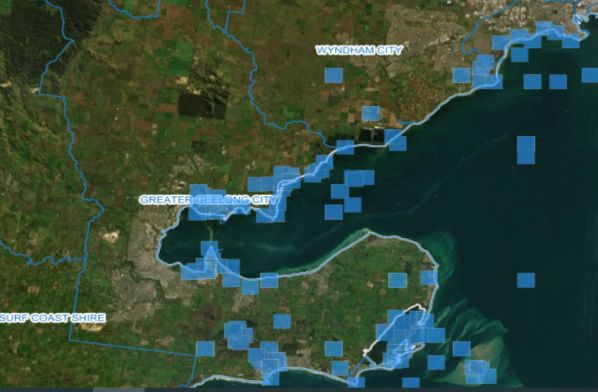
All known records of Easter Curlew in the City of Greater Geelong. Source: VVB & VBA 2020. There are about 1500 known records of Eastern Curlew in the City of Greater Geelong. Although the distribution appears to less since around 1990 there are still good concentrations of records in wetlands associated with the western treatment plant, along the northern section of Corio Bay and Swan Bay. Records around Point Henry and the lower Barwon are generally more than 15 years old which indicates a local contraction in the species range.
How to help: report sightings, advocate for protection of wetlands and restrictions on developments in known Eastern Curlew habitat. Local Government and land managers need to ensure control of feral cats and foxes around wetlands.
Hooded Plover
Thinornis rubricollis - Vulnerable (DSE 2013) reassessed as Vulnerable (FFG Threatened List 2021).
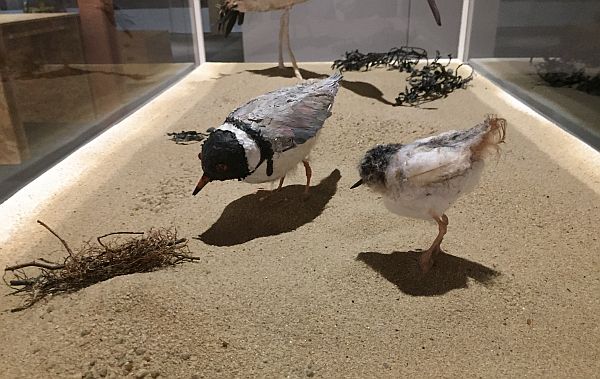
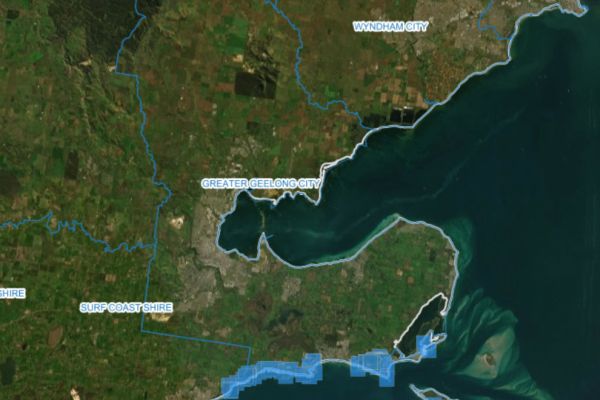
All known records of Hooded Plover from 1990 to 2020. Source: VVB & VBA 2020. Prior to 1990, Hooded Plover records were quite well represented along the City of Greater Geelong’s ocean coastline but since 1990 there has been a steady decline in records which became particularly bad in the years 2005 to 2010. This species is now hanging on in only a few locations such as Breamlea, 13th Beach and Point Lonsdale. More about Hooded Plover.
How to help: join in to be a volunteer with Birdlife’s beach nesting program. Keep dogs off beaches and away from Hooded Plovers during nesting time (August to February). Encourage land managers to undertake feral cat and fox control, particularly near the last few known Hooded Plover nesting areas.
Major Mitchell’s Cockatoo
Cacatua leadbeateri - Vulnerable (DSE 2013) to Critically Endangered (FFG Threatened List 2021).
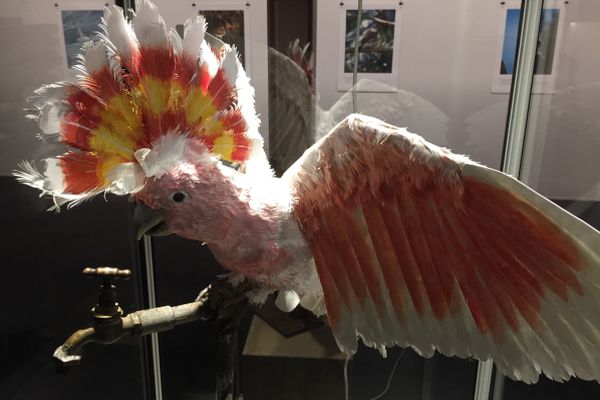
Major Mitchell’s Cockatoo - Now You See Us
There are only 8 records of Major Mitchell’s Cockatoo in the City of Greater Geelong and no records since 1999. Between 1950 to 1960 there were 4 separate records in the You Yangs area. Other records are; Serendip Sanctuary (1961), near the Ford Test Track (1989), You Yangs (2005) and Queens Park (1999). Source: VVB & VBA 2020.
How to help: report sightings, retain mature paddock trees in the You Yangs area. Join in with any revegetation programs being organised by Landcare or Parks Victoria.
Orange-bellied Parrot
Neophema chrysogaster - Critically Endangered (DSE 2013) reassessed as Critically Endangered (FFG Threatened List 2021).
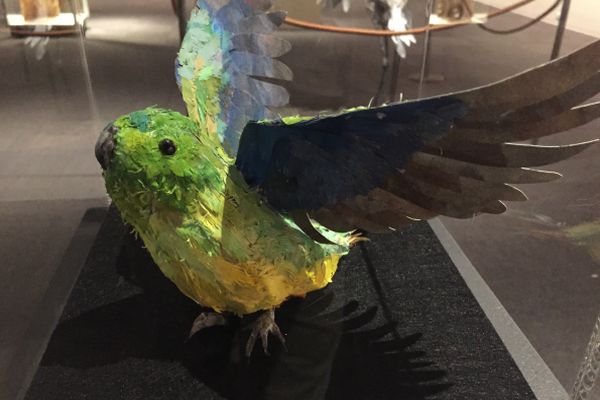
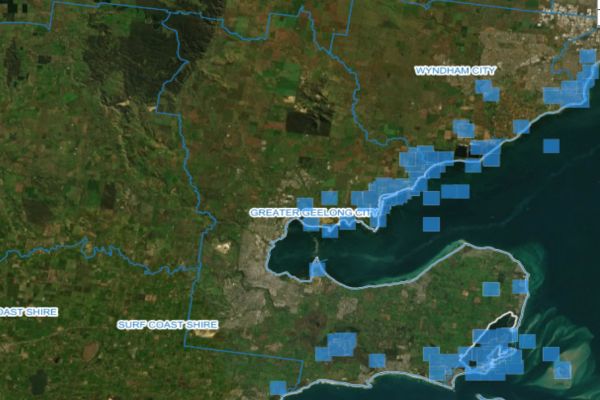
All known historic records of Orange-bellied Parrot in the City of Greater Geelong. Source: VVB & VBA 2020.
The Orange-bellied Parrot has suffered a sever decline between 2000 and 2010. In the City of Greater Geelong, the Orange-bellied Parrot was once recorded from numerous locations around Swan Bay, Lake Connewarre and along the northern shoreline of Corio Bay to Werribee with 522 records in the City of Greater Geelong. Now it is only recorded in very small numbers at the Spit Nature Conservation Reserve, Point Wilson. The population overall is now supported by captive bred birds. More about Orange-bellied Parrot.
How to help: join in with Birdlife’s Orange-bellied parrot monitoring program over the winter months.
Plains-wanderer
Pedionomus torquatus - Critically Endangered (DSE 2013) reassessed as Critically Endangered (FFG Threatened List 2021).
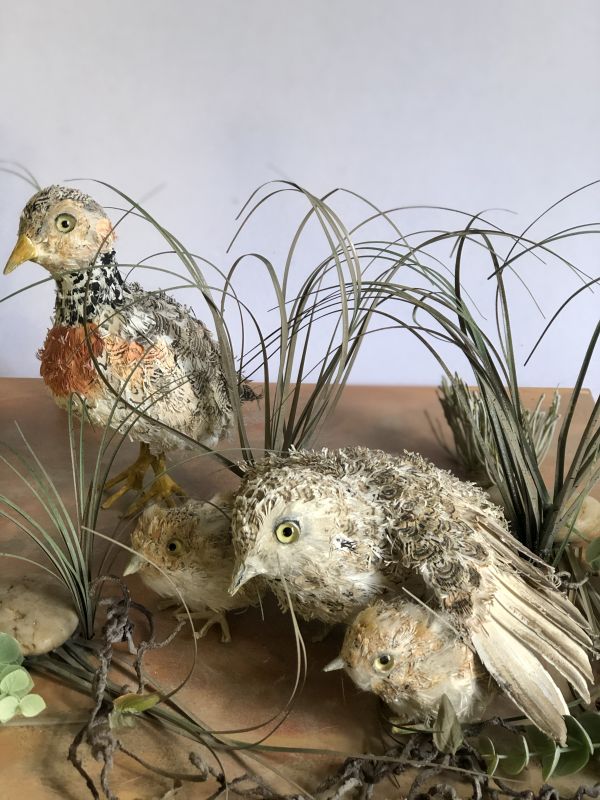
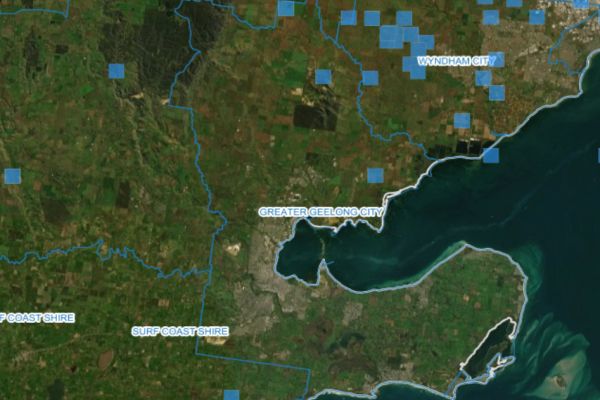
The Plains-wanderer inhabits native grasslands with a mosaic of grasses and herbs, leaf litter and bare ground where it forages for grass, saltbush seeds and insects. There has been a dramatic reduction in habitat which has impacted on the population across its range in Victoria. The last known records in the City of Greater Geelong were in the 1980’s in the northern grassland areas around Avalon and the north of the You Yangs.
How to help: protect existing remnant native grasslands and create grassland habitat corridors to form bio-linkages. Possible areas could be selected for re-introduction via Zoos Victoria captive breeding program.
More about conservation and management of the Plains-wanderer
Regent Honeyeater
Xanthomyza phrygia - Critically Endangered (DSE 2013) reassessed as Critically Endangered (FFG Threatened List 2021).
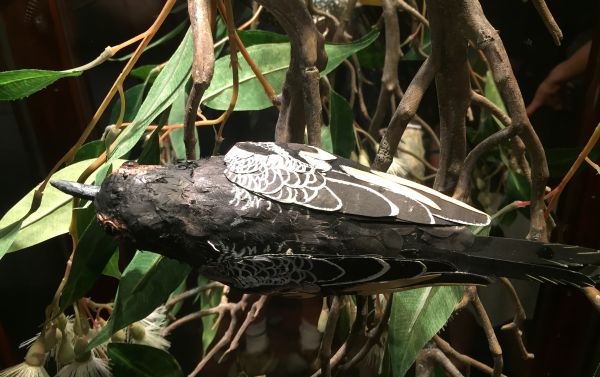
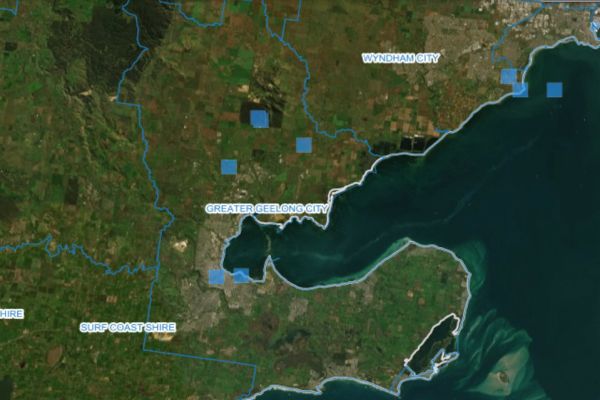
The Regent Honeyeater is a rare visitor to the City of Greater Geelong with only 6 known records of this species. Historic records exist for Newton (1993), You Yangs (1950, 1960, 1989), Mt Rothwell (1960). It is interesting to note that there have been no sightings since 1989. Source: VVB & VBA 2020. More about Regent Honeyeater.
How to help: join in with Birdlife’s twice annual national regent honeyeater count weekends being on 3rd weekend in May and the 1st weekend in August. Volunteer in the Regent Honeyeater revegetation project in northern Victoria. Landholders should retain paddock trees and revegetate where possible. Regent Honeyeaters show a consistent preference for just four eucalypt species: Mugga Ironbark Eucalyptus sideroxylon, White Box Eucalyptus albens, Yellow Box Eucalyptus melliodora and Yellow Gum Eucalyptus leucoxylon. All four species flower profusely and have especially rich nectar flows.
Shy Albatross
Diomedea cauta - Vulnerable (DSE 2013) to Endangered (FFG Threatened List 2021).
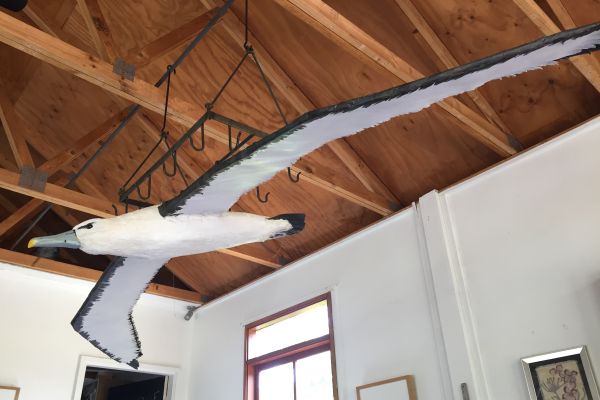
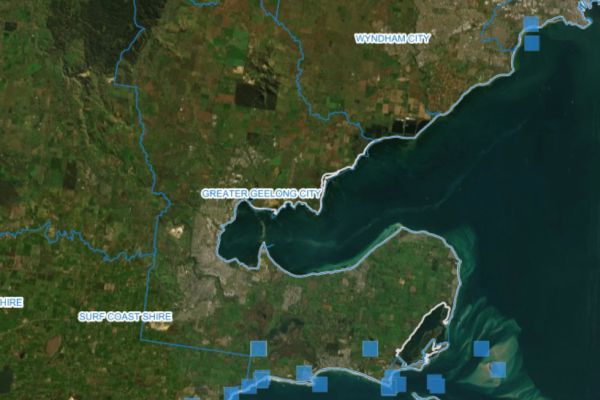
All known records of Shy Albatross in the City of Greater Geelong Source: VVB & VBA 2020.
The Shy Albatross is an infrequent visitor to the area with 65 know records which date back to 1977. Records are mainly confined to the ocean areas in the City of Greater Geelong, particularly in the Barwon Heads area with the most recent sighting 2019 at Blue Rocks.
How to help: support efforts to reduce discarded fishing line and plastics. Report sightings.
Spotted Harrier
Circus assimilis - Near Threatened (DSE 2013) reassessed to not threatened (FFG Threatened List 2021)
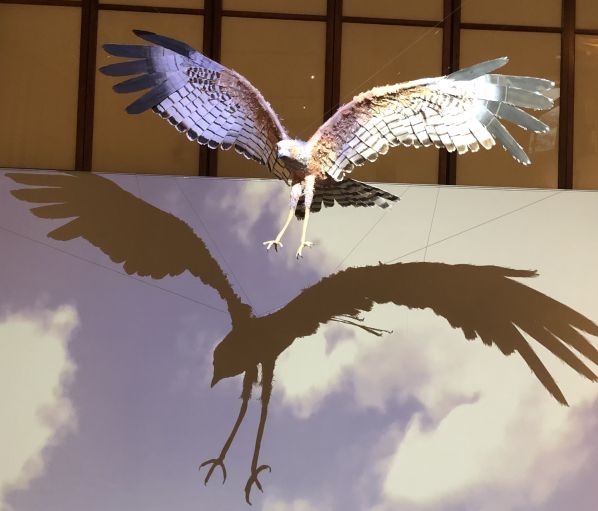
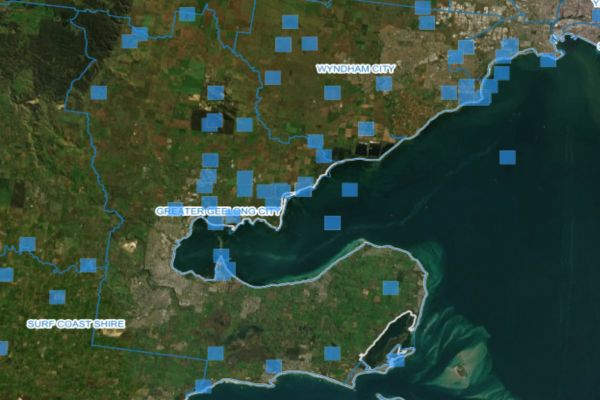
All historic records of Spotted Harrier. Map source: VVB & VBA 2020.
There are 423 known historic records of Spotted Harrier in the City of Greater Geelong with most records on the plains north of Corio Bay towards Avalon. This species has also been recorded in the Point Henry area. There has been a marked decline in sightings which began around 2000, since 2005 it has not been recorded from many of the former locations which is of concern.
How to help: report sightings.
References and data source
Threatened Birds Table Data Source:
- FFG Act Threatened list (2021) Flora and Fauna Guarantee Act Threatened List , Department of Environment, Land, Water & planning 2021
- DSE (2013) Advisory List of Threatened Vertebrate Fauna in Victoria (2013) (Legacy document only) - now replaced by FFG Threatened List 2021)
- VBA (2020) Victorian Biodiversity Atlas, Department of Environment, Land, Water & Planning, Victoria, February 2020.
- VVB (2020) Visualising Victoria's Biodiversity,


